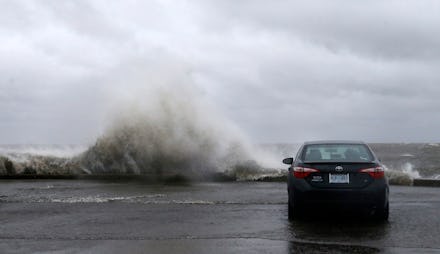Which states will Tropical Storm Cindy hit? Projected path and what to expect

Michael Guy, a CNN meteorologist, said Wednesday that Tropical Storm Cindy — the second tropical storm to hit the Gulf Coast since the region's hurricane season officially began — will bring winds of up to 50 mph and up to 12 inches of rain to the 17 million Americans in its projected path.
The National Weather Service issued a tropical storm warning Tuesday to residents in some areas along the Gulf Coast of Mississippi, Louisiana and Texas.
On Wednesday, a map on the NWS website extended the warning to residents of some areas of Florida and Alabama, telling them to expect extreme weather caused by Cindy. It also placed parts of Georgia on a Flash Flood Watch.
The NWS, a government office is part of the National Oceanic and Atmospheric Administration, is responsible for alerting residents of life-threatening or otherwise hazardous weather conditions like hurricanes and blizzards. Both the NWS and the NOAA are overseen by the Department of Commerce.
As of Wednesday, President Donald Trump has not appointed a candidate to lead the NOAA, a stark contrast against his predecessor, former President Barack Obama, who appointed marine biologist Jane Lubchenco to lead the administration in December of 2008, a month before he was inaugurated.
"That [lack of leadership] should scare the hell out of everybody," former U.S. Lt. Gen. Russel Honoré said to CNN in early June. "These positions help save lives. Just look back to Hurricane Katrina to see how important leadership was. If someone is slow in making decisions it can be costly — imagine having no one at all."
In the time since Honoré made those remarks, the Senate voted to confirm Brock Long to lead the Federal Emergency Management Agency.
NOAA forecasters said in May that an "above-normal" frequency of big storms would be the most likely outcome for 2017's Atlantic hurricane season, which lasts from the beginning of June to the end of November.